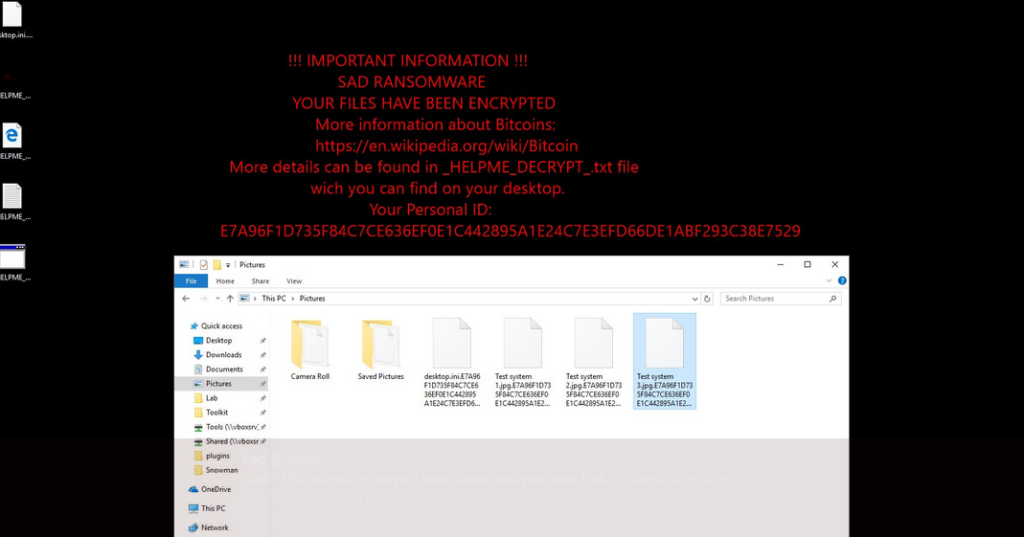
An infection with the dangerous Sad Ransomware leads to serious security issues. Victims can restore and protect their computers by following our complete removal guide.
Remove Sad Ransomware and Restore PC
Manual Removal Guide
Skip all steps and download anti-malware tool that will safely scan and clean your PC.
SpyHunter anti-malware tool will diagnose all current threats on the computer. By purchasing the full version, you will be able to remove all malware threats instantly. Additional information about SpyHunter / Help to uninstall SpyHunter
Distribution of Sad Ransomware
The Sad Ransomware is a new malware threat which at the moment has been spotted in a very limited attack wave. Due to the yet unknown criminals behind its launch the security experts cannot deduce which is the primary distribution method. As such we suspect that the most popular strategies are going to be employed.
One of them relies on creating email messages in an automated way which all deliver the Sad Ransomware to the targets. A common way of doing this is by attaching the strains directly to the messages. This is one of the easiest way for the criminals to attempt the infection. However a lot of email hosting providers usually capture the signatures of the virus and as such discard such messages or label them as dangerous or spam. Other infection methods related to this one is the option of inserting hyperlinks in the body content of the messages. The links are usually labeled as leading to a familiar website or a file of user interest. Redirects can redirect to hacker-controlled sites, infected payloads or other instances that can lead to an Sad Ransomware infection.
The computer criminals behind the malware can create malicious sites or download portals which distribute malware of different kinds, including the Sad Ransomware. A popular option is the use of infected documents which may be of different types ‒ spreadsheets, rich text documents, presentations and databases. They are modified to initiate the virus once the built-in scripts are run. Usually when the files are opened a notification will ask the users to run the macros (scripts). If this is done the infection follows.
The hacker-controlled sites are specialist portals that have been created either manually or automatically by the criminals behind the Sad Ransomware. They can either directly distribute the threat by initiating various scripts or automated operations or link to such instances. Redirects are usually caused by email interaction, ad networks or other browsing activity. However one of the main sources is the availability of browser hijackers. They are malicious addons made for the most popular web browsers ‒ Mozilla Firefox, Google Chrome, Internet Explorer, Opera, Microsoft Edge and Safari. Once installed they not only infect the users with the malware, but also redirect the victims to a hacker-controlled site. Depending on the configuration the browser hijackers can also steal sensitive information such as any stored passwords, account credentials, history, bookmarks, form data and settings.
Impact of Sad Ransomware
The Sad Ransomware is a newly discovered malware which is of unknown source. At te moment the initial security analysis does not reveal a code correlation between the captured strains and any of the famous malware families. This means that the Sad ransomware strains are being developed by the hacker or criminal collective from scratch. In addition no information about the attacker(s) is available yet.
The number of captured samples is low which does not give enough information about the intended targets. What is certain is that the virus has an extensive features list. Given that this is the initial version we expect to see updated versions in the future.
Before any further procedures are done a lot of information is being harvested from the machines. This include hardware components, installed software and user settings. This is especially important as the regional settings are used by the virus engine to determine which ransomware note to generate after the encryption process is complete.
The Sad ransomware is capable of launching processes on its own which can act as an intrusion mechanism for other viruses as well. The analysis reveals that one of the key features of the malware code to hook to other applications. It also exhibits browser hijacker behavior by modifying the proxy settings and queering browser security settings. This can be used in two typical case scenarios:
- Network Traffic Redirect ‒ In this case the hackers seek to redirect the network traffic through their own servers. Creating a proxy settings allows the criminals to easily read all traffic including passwords, sensitive data and account credentials without using Trojan modules.
- Malware Infections ‒ The criminals can use the standard approach of redirecting the victims browsers to a specific malware site. It can be used to capture their behavior, activity, credentials and other sensitive data. In many cases the interactions with the site leads to additional infections.
The security analysts note that the Sad ransomware code also seeks to hijack the terminal service related keys (RDP credentials). They are used by system administrators and users to remote control the machines using the built-in application or another program. Hijacking the keys leads to a very clean and easy approach that the hackers can use to obtain control of the system.
Once the virus engine has completed its pre-encryption sequence it deletes the temporary files and starts up the processing module. Like other related viruses it uses a built-in list of target file type extensions which are used to guide the virus. Usually the most widely used data is targeted: archives, documents, images, music, videos, configuration files, backups and etc.
All victim files are renamed with a random extension. The background image is changed to a black background with text written in red color which reads the following:
!!! IMPORTANT INFORMATION !!!
SAD RANSOMWARE
YOUR FILES HAVE BEEN ENCRYPTED
More information about Bitcoins:
https://en.wikipedia.org/wiki/Bitcoin
More details can be found in _HELPME_DECRYPT_.txt file
wich you can find on your desktop.
Your Personal ID:
E7A96F1D735F84C7CE636EF0E1C442895A1E24C7E3EFD66DE1ABF293C38E7529
As usual the hackers resort to the standard blackmail strategy. They construct payment gateways or send their wallet addresses directly in the ransomware note (which is generated on the desktop). As the fee is paid via Bitcoins in the most common scenarios, the transactions can vary in their end price. Victims of the sad ransomware should not attempt any contact with the hackers or interaction with the site. The best way to effectively restore the files and remove the infections is by following our in-depth instructions below.
Remove Sad Ransomware and Restore PC
WARNING! Manual removal of the Sad Ransomware requires being familiar with system files and registries. Removing important data accidentally can lead to permanent system damage. If you don’t feel comfortable with manual instructions, download a powerful anti-malware tool that will scan your system for malware and clean it safely for you.
SpyHunter anti-malware tool will diagnose all current threats on the computer. By purchasing the full version, you will be able to remove all malware threats instantly. Additional information about SpyHunter / Help to uninstall SpyHunter
Sad Ransomware – Manual Removal Steps
Start the PC in Safe Mode with Network
This will isolate all files and objects created by the ransomware so they will be removed efficiently. The steps bellow are applicable to all Windows versions.
1. Hit the WIN Key + R
2. A Run window will appear. In it, write msconfig and then press Enter
3. A Configuration box shall appear. In it Choose the tab named Boot
4. Mark Safe Boot option and then go to Network under it to tick it too
5. Apply -> OK
Remove Sad ransomware from Windows
Here’s a way to remove the program. This method will work regardless if you’re on Windows 10, 8, 7, Vista or XP. Simply selecting the program and pressing delete won’t work, as it’ll leave a lot of small files. That’s bad because these leftovers can linger on and cause all sorts of problems. The best way to delete a program is to uninstall it. Here’s how you can do that:
1. Hold the “Windows” button (It’s between CTRL and Alt on most keyboards) and press “R”. You’ll see a pop-up window.

2. In the textbox, type “appwiz.cpl”, then press“ Enter ”.

3. The “Programs and features” menu should now appear. It’s a list of all the programs installed on the PC. Here you can find the program, select it, and press “Uninstall“.
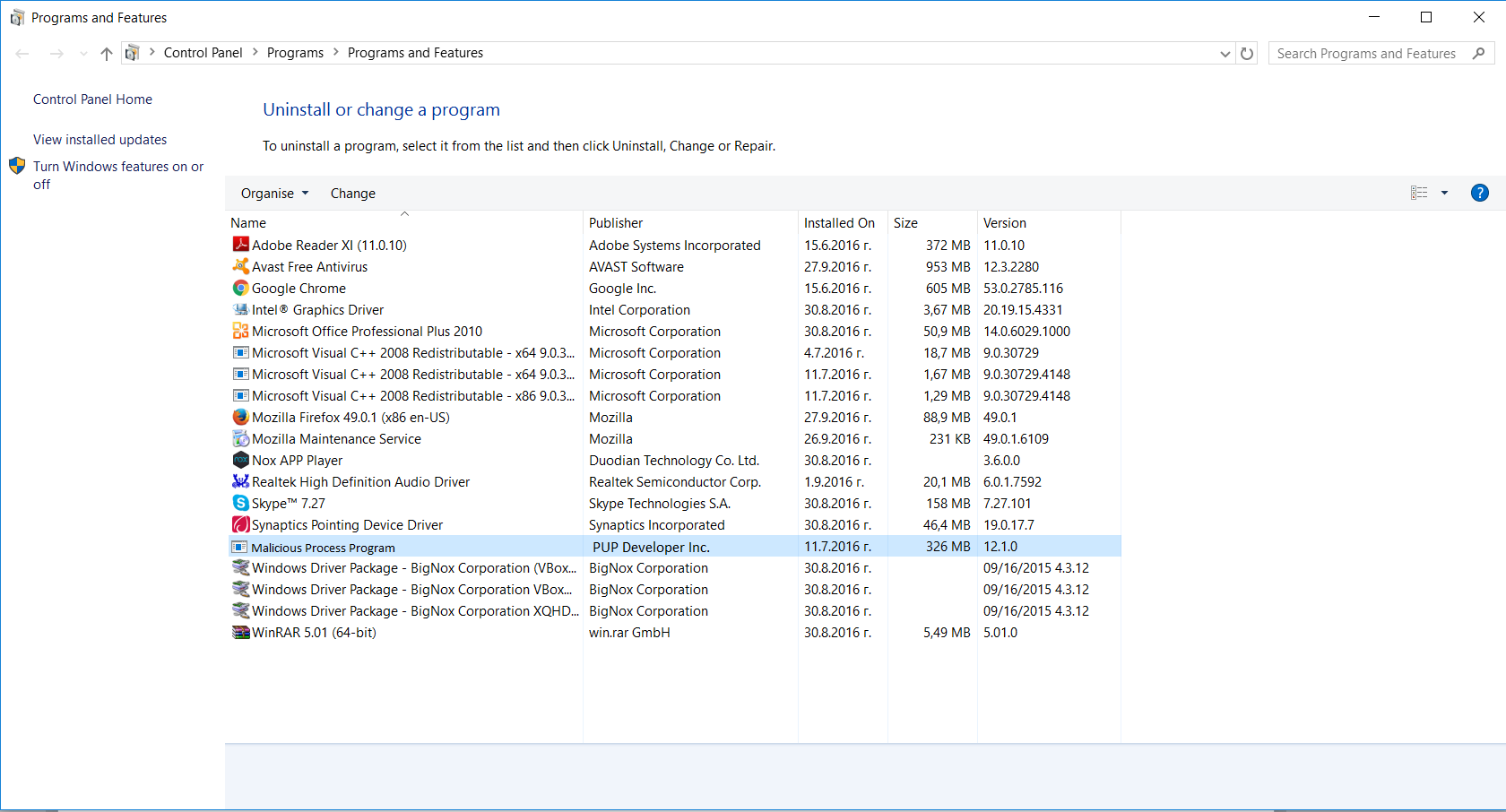
Remove Sad ransomware Virus From Your Browser
Before resetting your browser’s settings, you should know that this action will wipe out all your recorded usernames, passwords, and other types of data. Make sure to save them in some way.
-
1. Start Mozilla Firefox. In the upper right corner, click on the Open menu icon and select “Add-ons“.
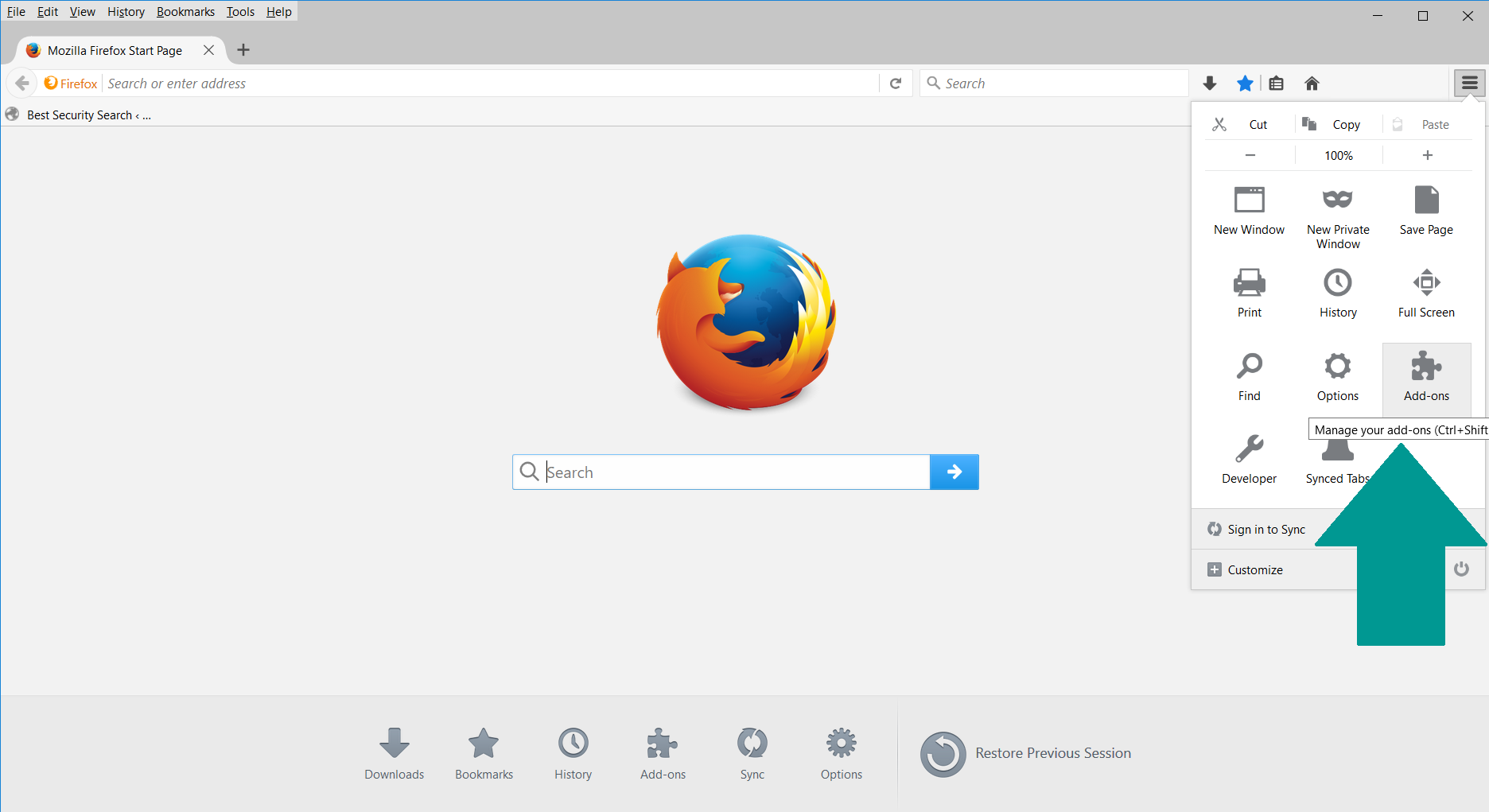
2. Inside the Add-ons Manager select “Extensions“. Search the list of extensions for suspicious entries. If you find any, select them and click “Remove“.
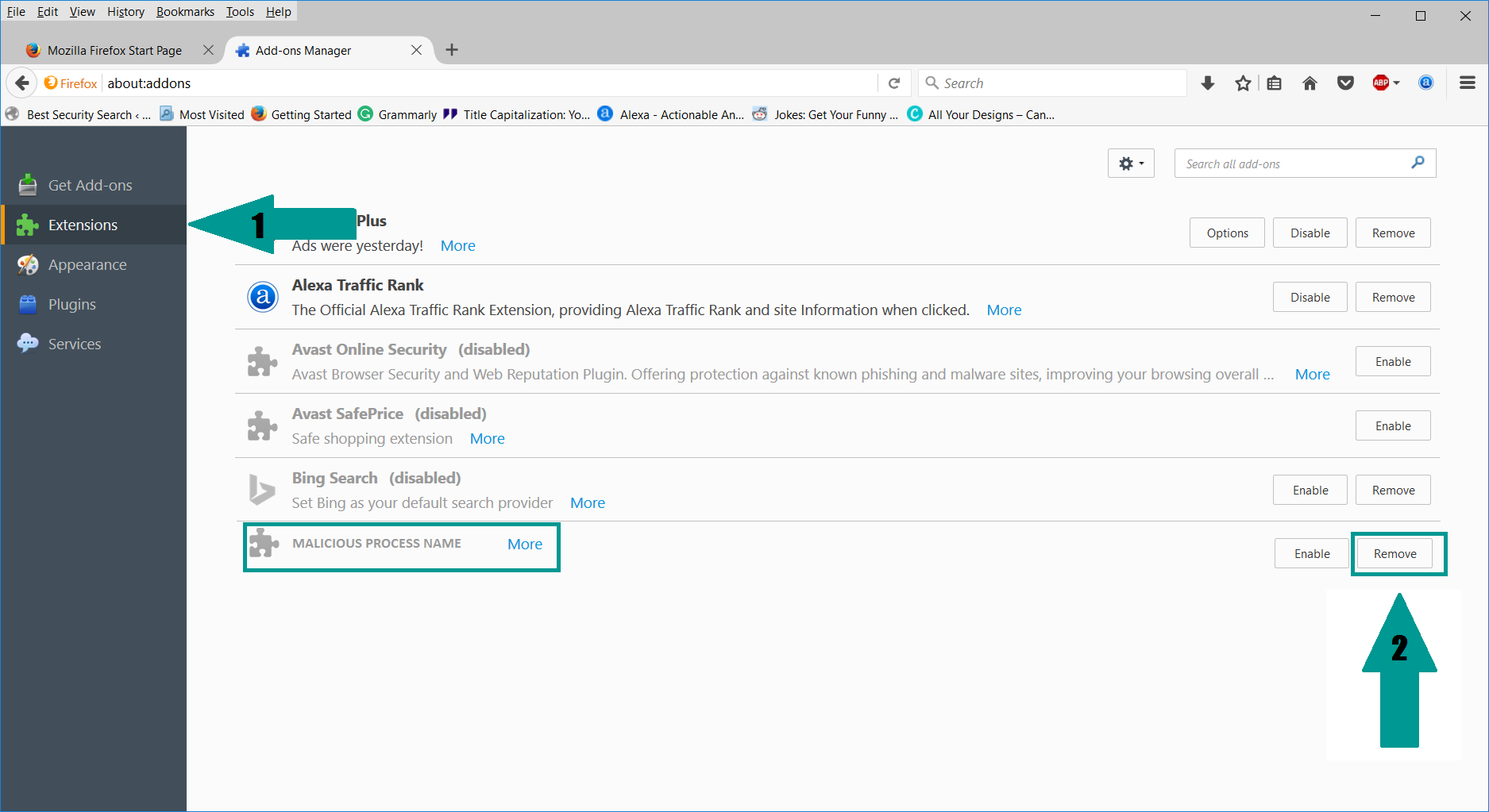
3. Click again on the Open menu icon, then click “Options“.
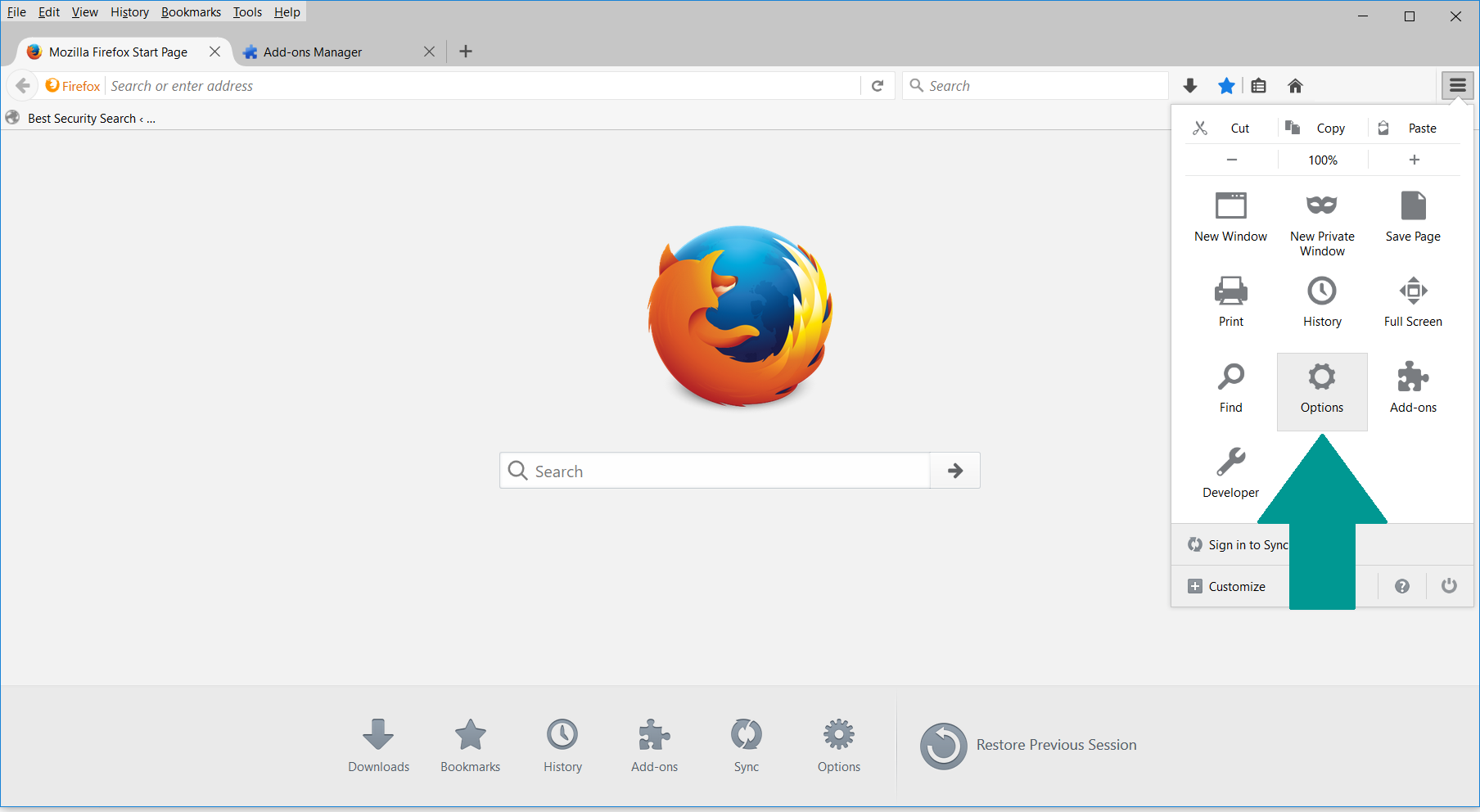
4. In the Options window, under “General” tab, click “Restore to Default“.
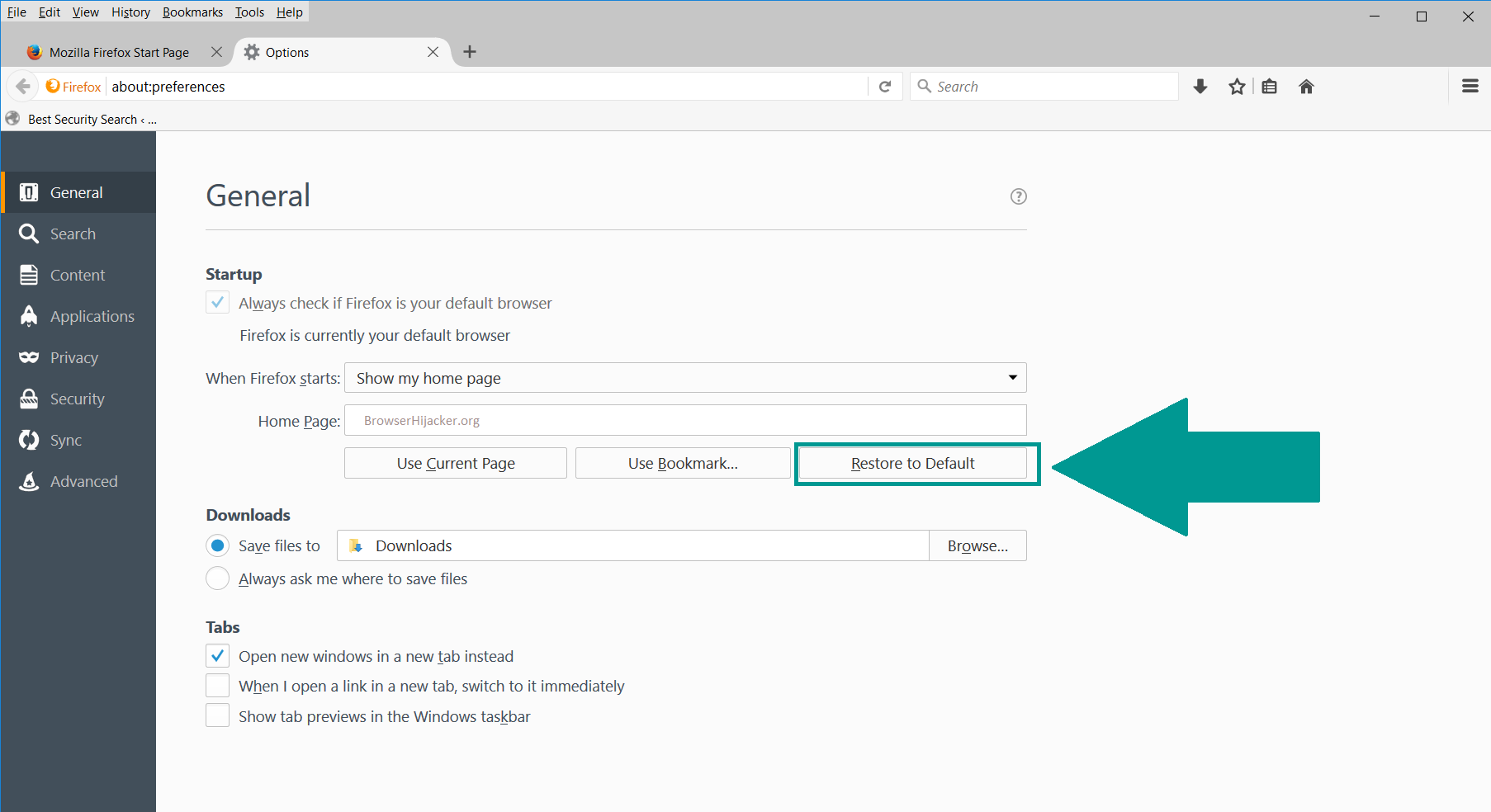
5. Select “Search” in the left menu, mark the unknown search engine and press “Remove”.
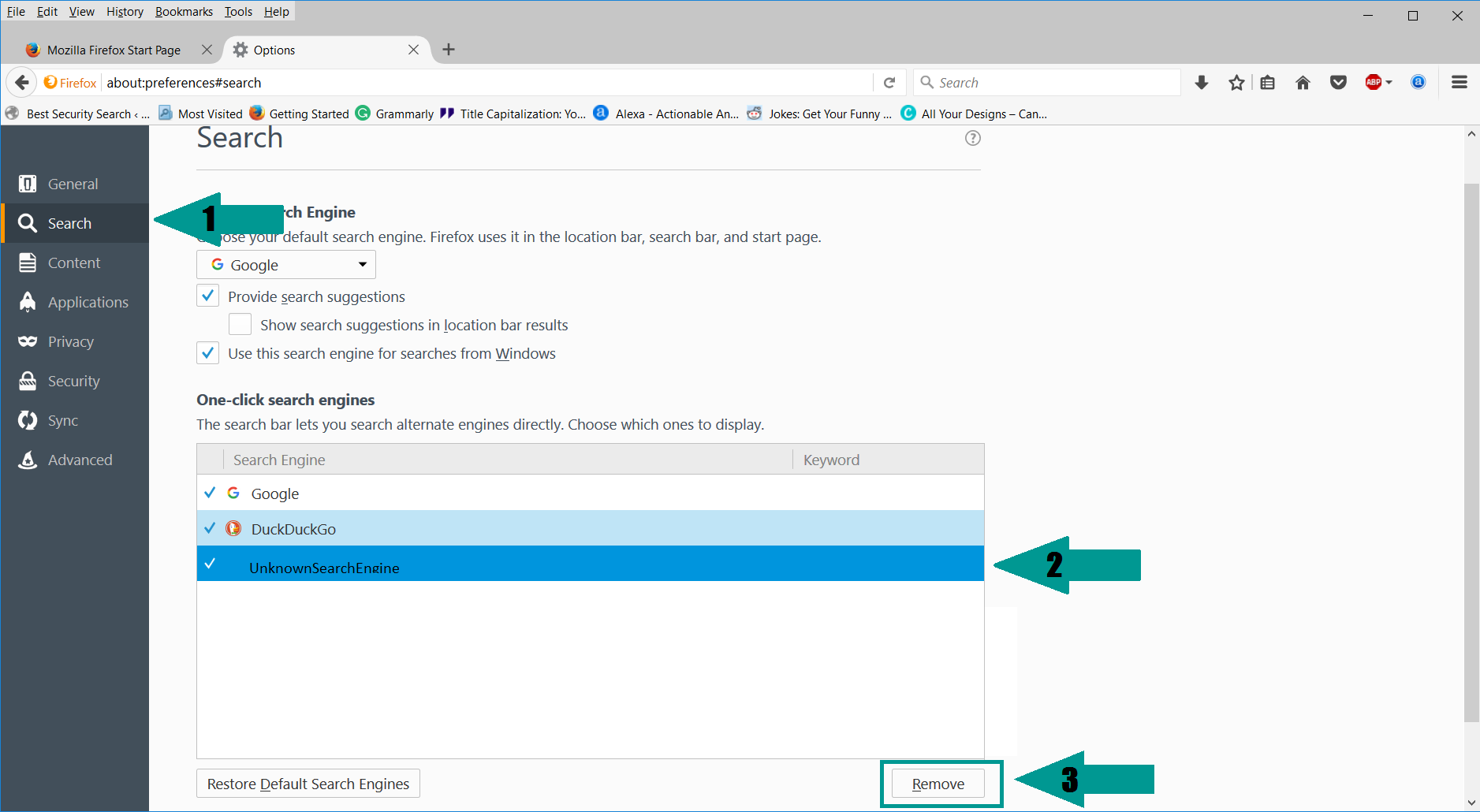
-
1. Start Google Chrome. On the upper-right corner, there a “Customize and Control” menu icon. Click on it, then click on “Settings“.
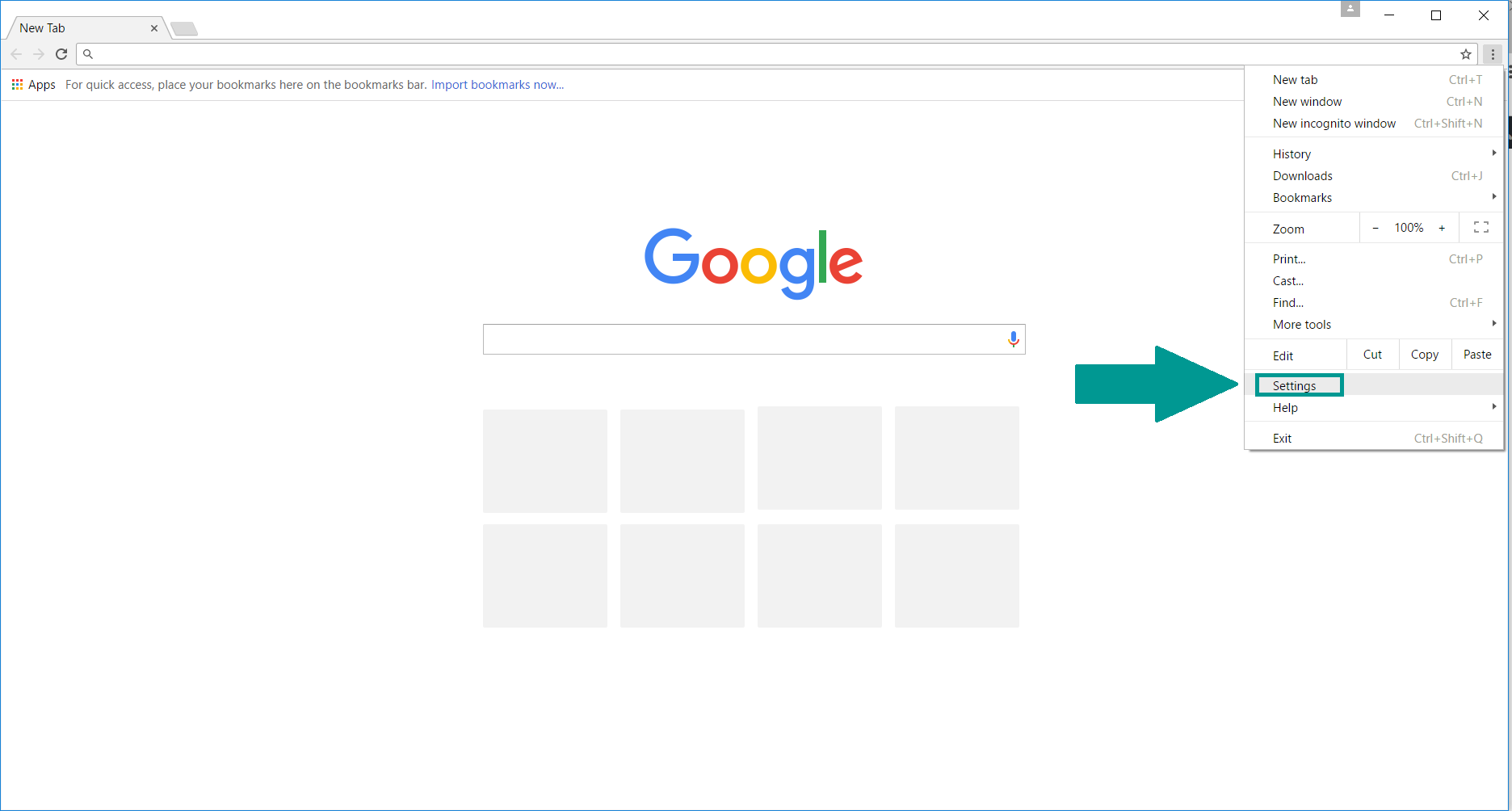
2. Click “Extensions” in the left menu. Then click on the trash bin icon to remove the suspicious extension.
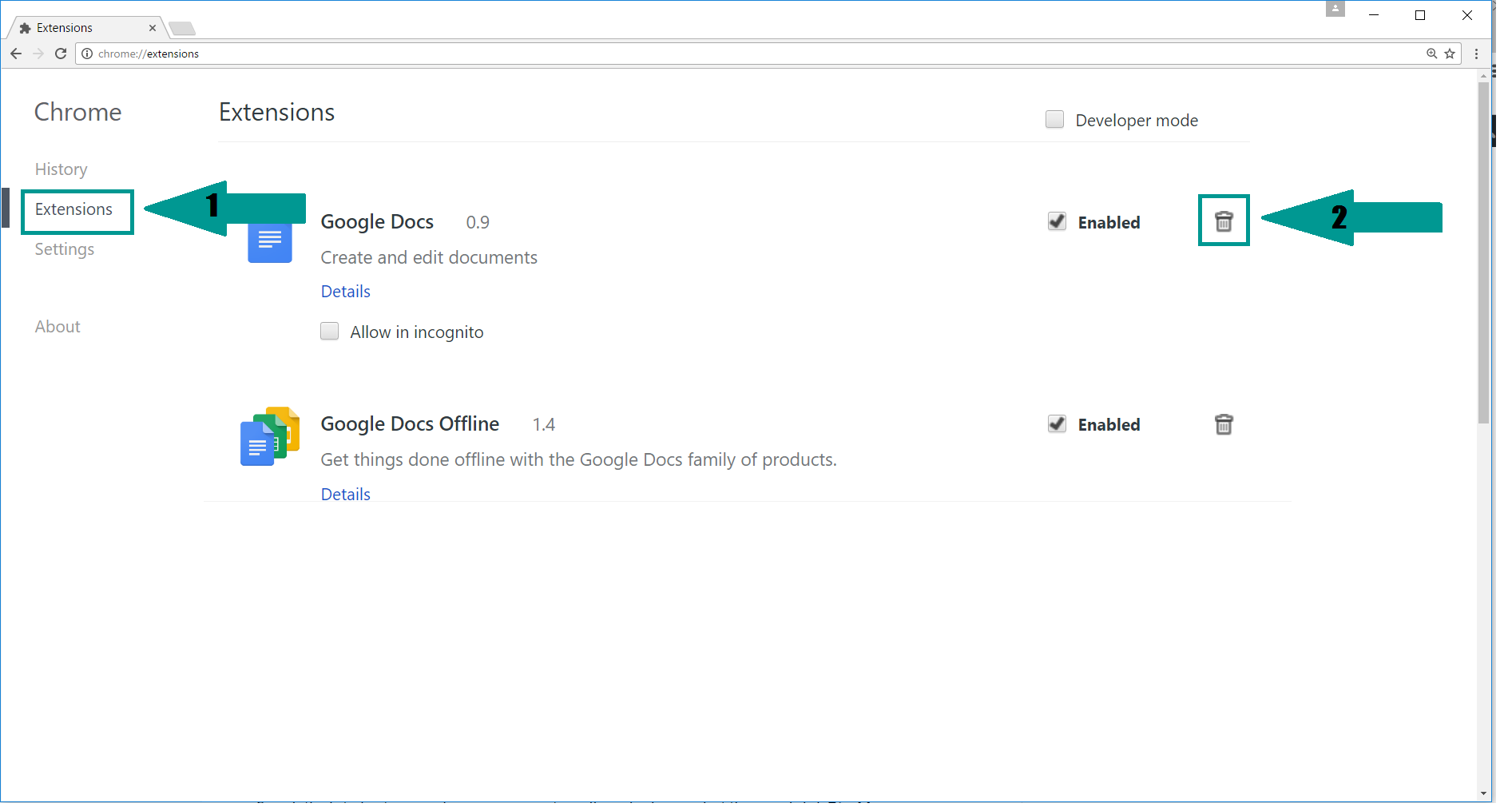
3. Again in the left menu, under Chrome, Click on “Settings“. Go under “On Startup” and set a new page.
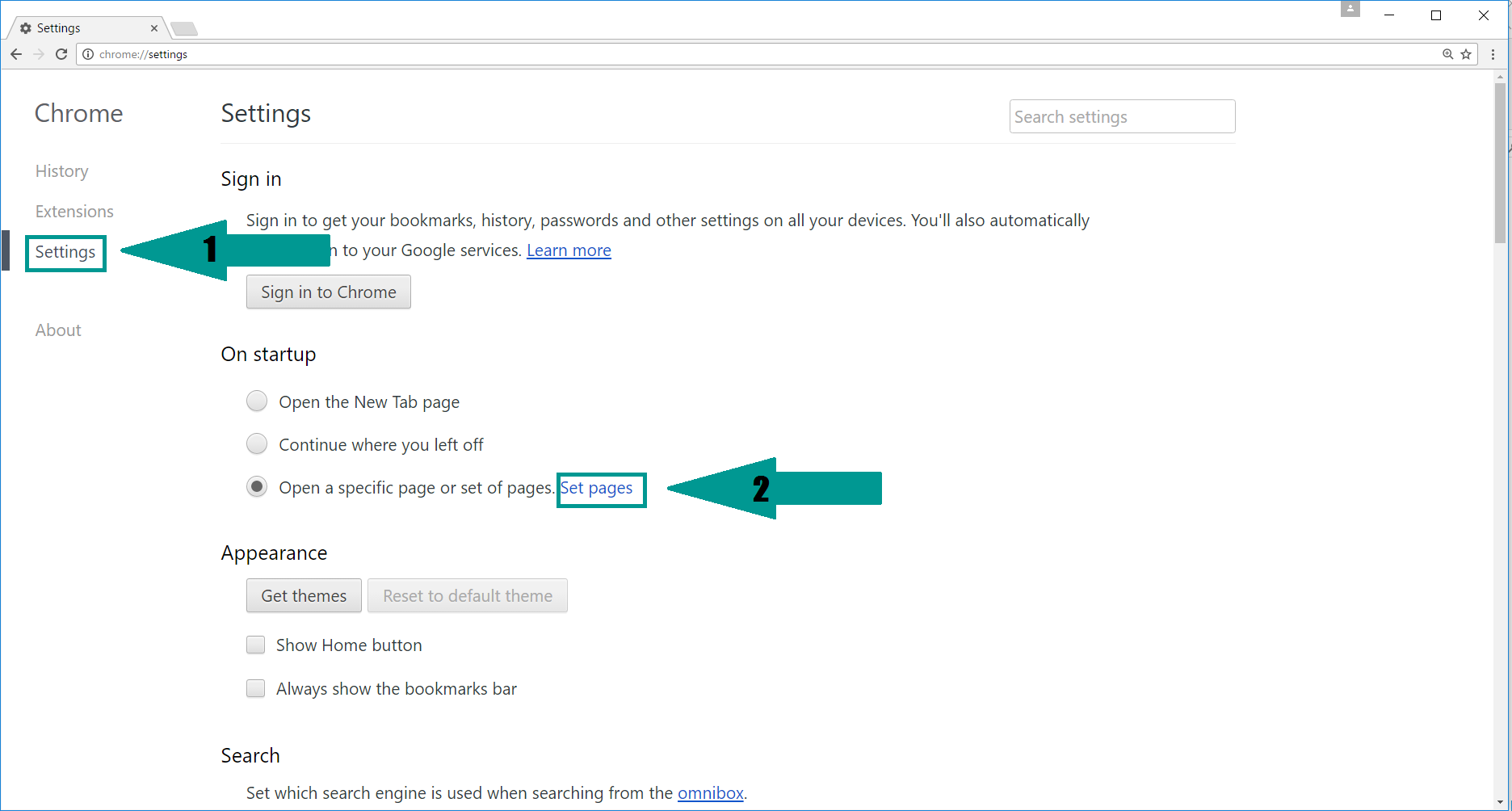
4. Afterward, scroll down to “Search“, click on “Manage search engines“.
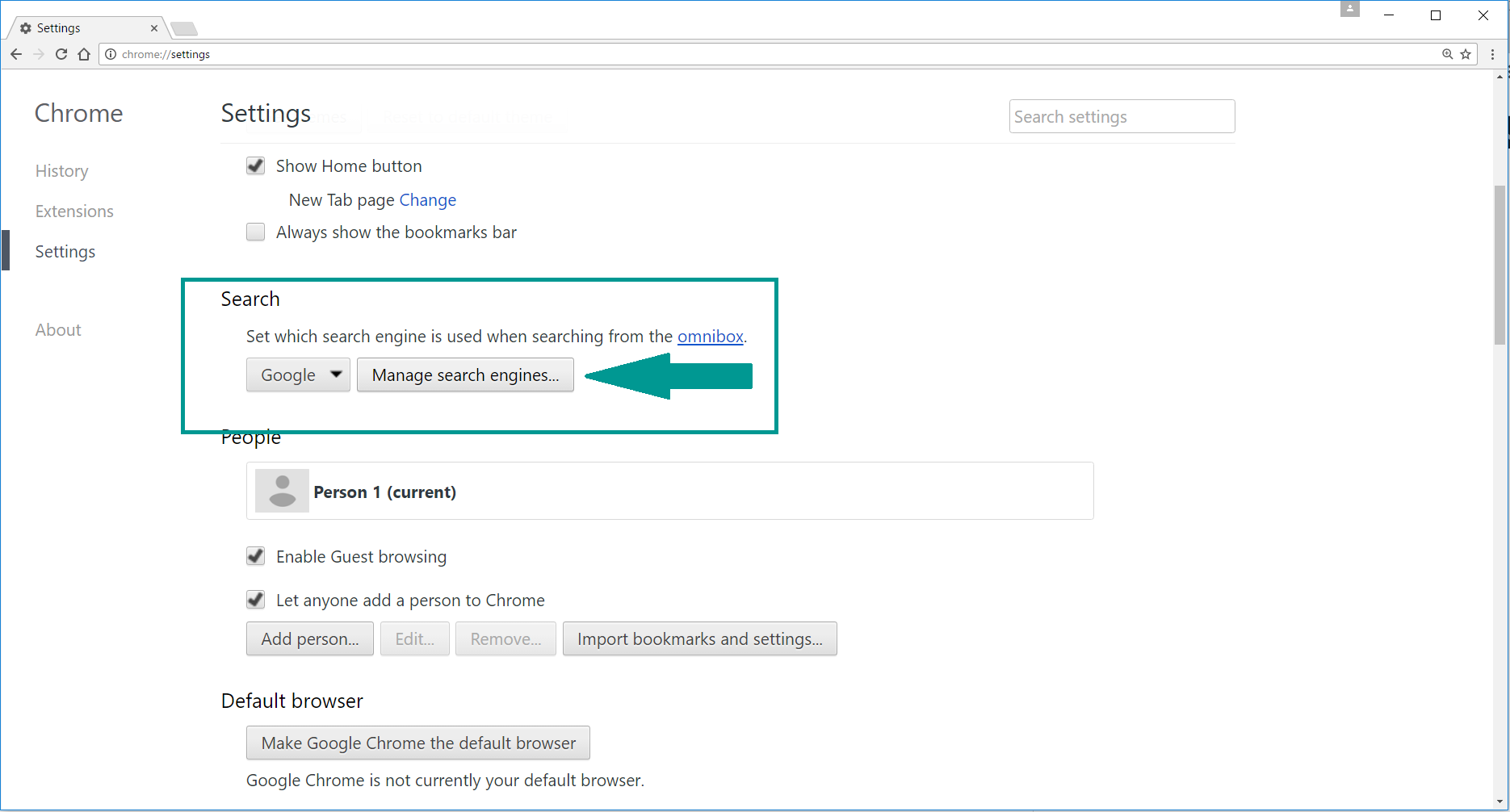
5. In the default search settings list, find the unknown search engine and click on “X“. Then select your search engine of choice and click “Make default“. When you are ready click “Done” button in the right bottom corner.
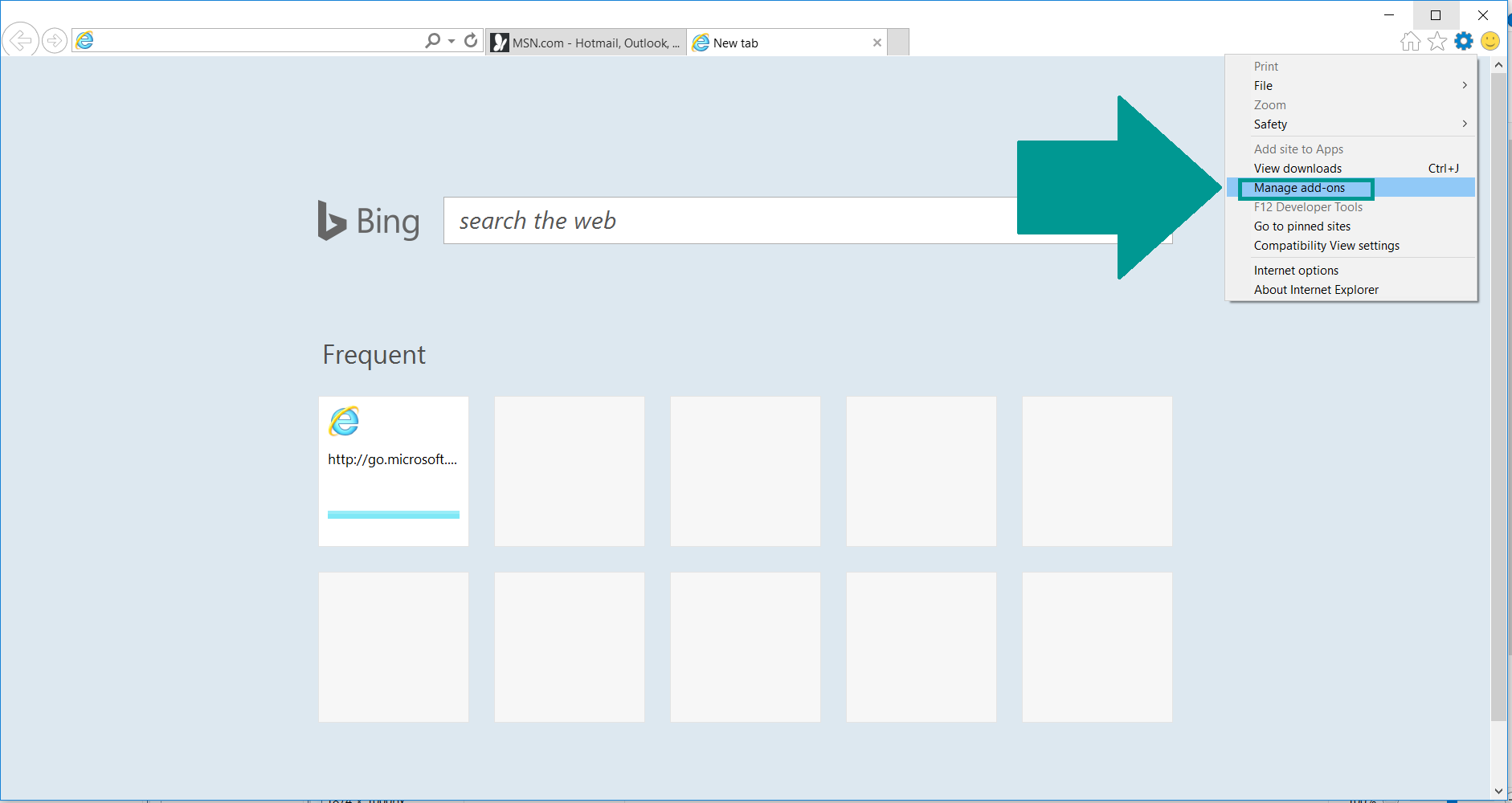
2. In the “Manage add-ons” window, bellow “Add-on Types“, select “Toolbars and Extensions“. If you see a suspicious toolbar, select it and click “Remove“.
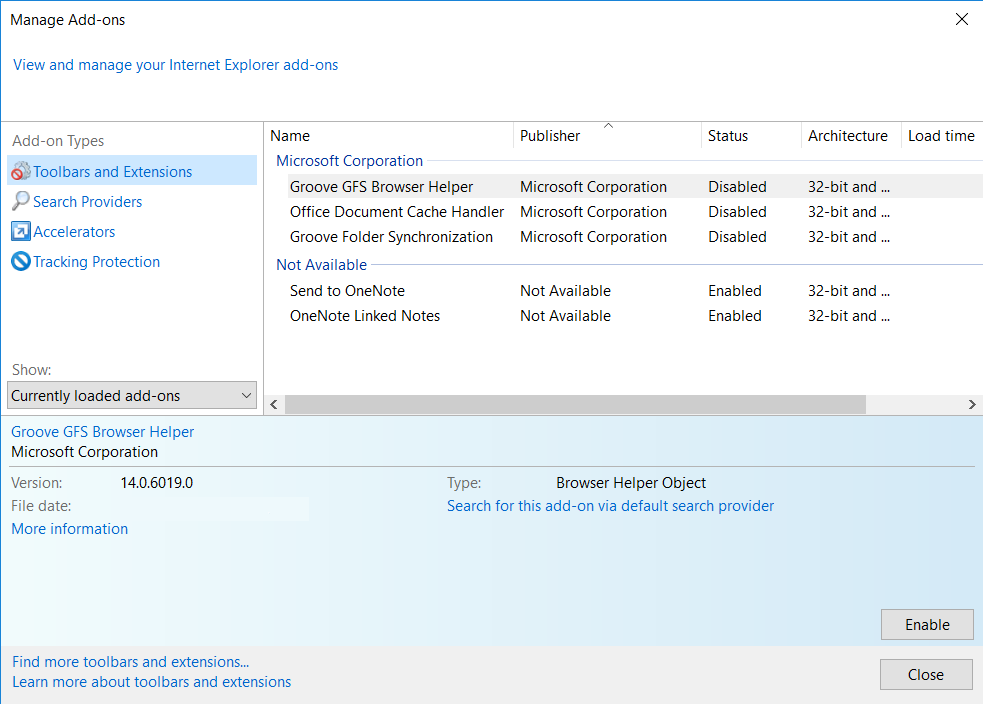
3. Then again in the “Manage Add-ons” window, in “Add-on Types“, Select “Search Providers“. Chose a search engine and click “Set as default“. Select the unknown search engine and click “Remove and Close”.
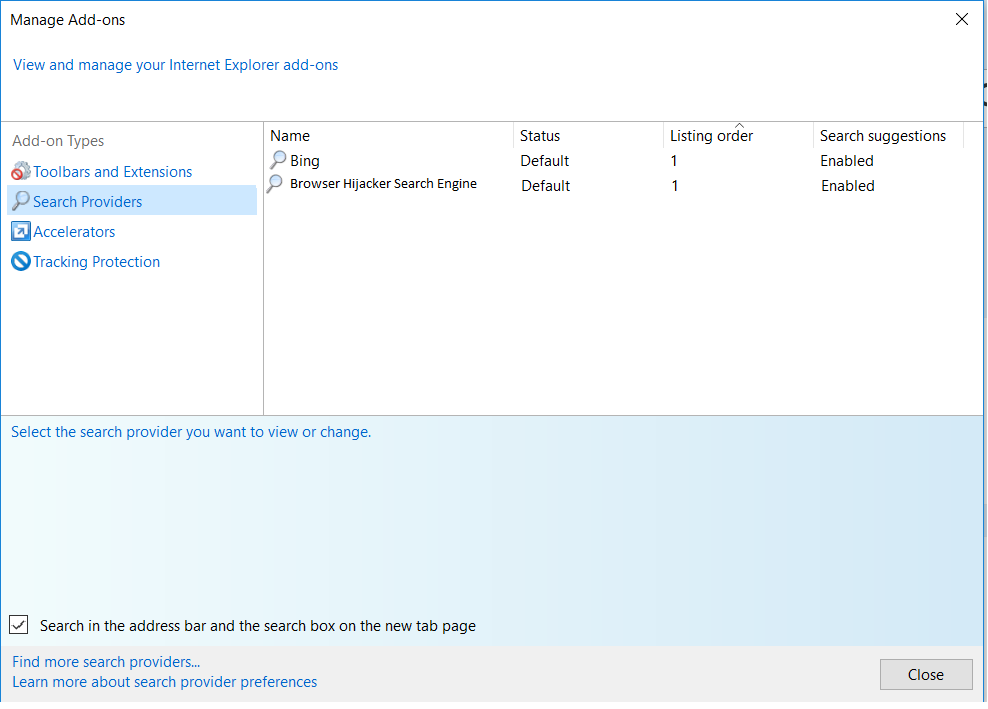
4. Open the Tools menu, select “Internet Options”.
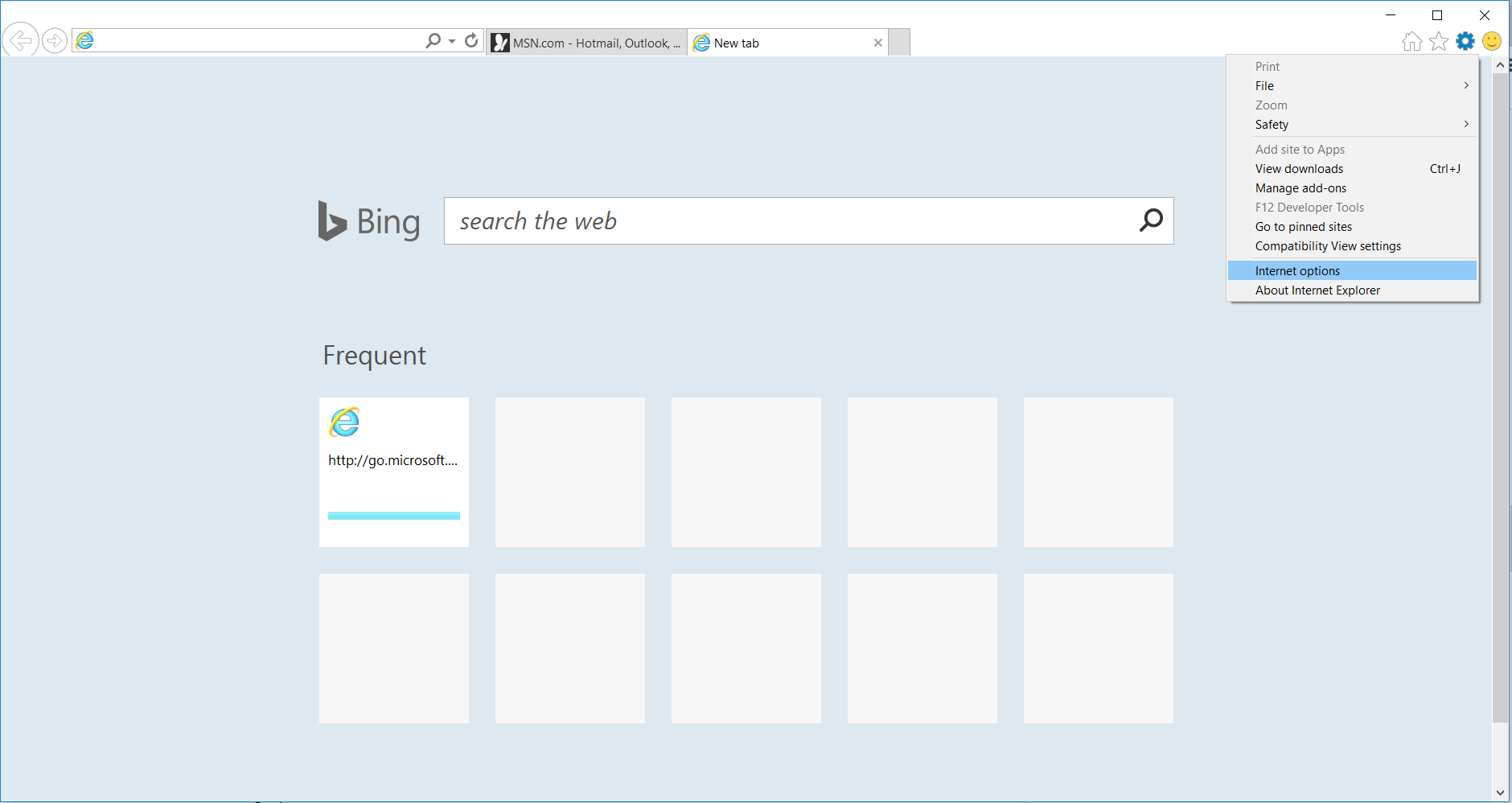
5. In the “General” tab, in “Home page”, enter your preferred page. Click “Apply” and “OK”.
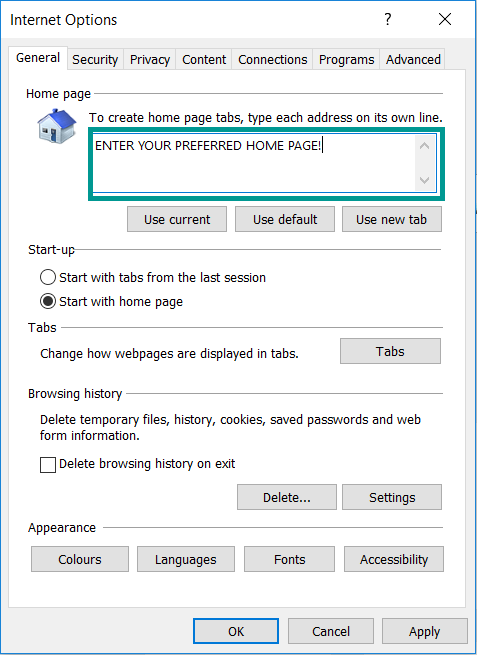
Repair Windows Registry
1. Again type simultaneously the WIN Key + R key combination
2. In the box, write regedit and hit Enter
3. Type the CTRL+ F and then write the malicious name in the search type field to locate the malicious executable
4. In case you have discovered registry keys and values related to the name, you should delete them, but be careful not to delete legitimate keys
Click for more information about Windows Registry and further repair help



